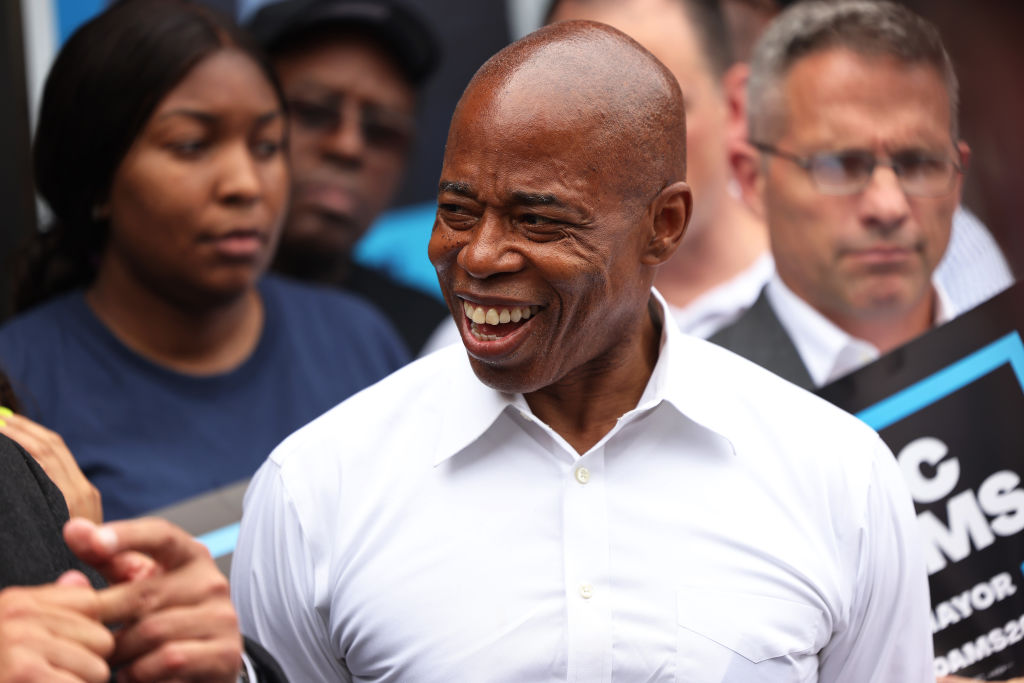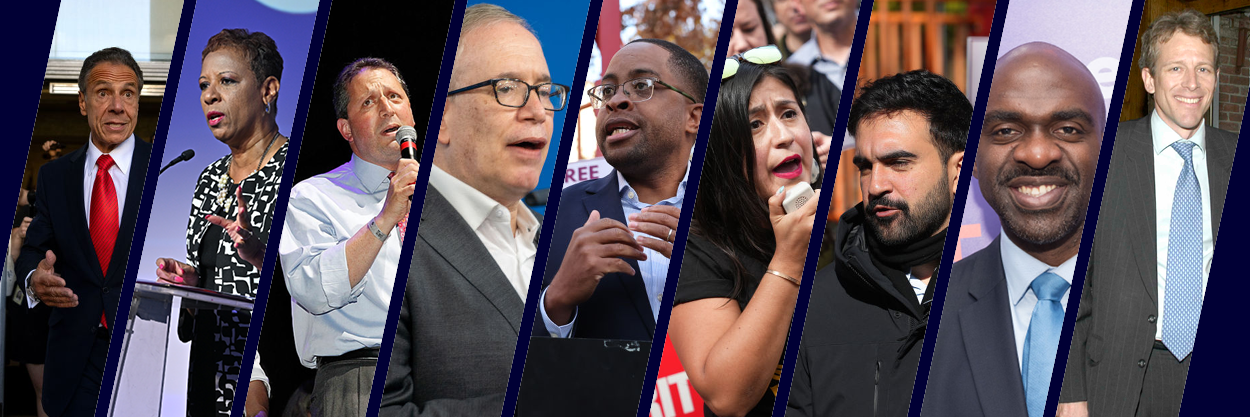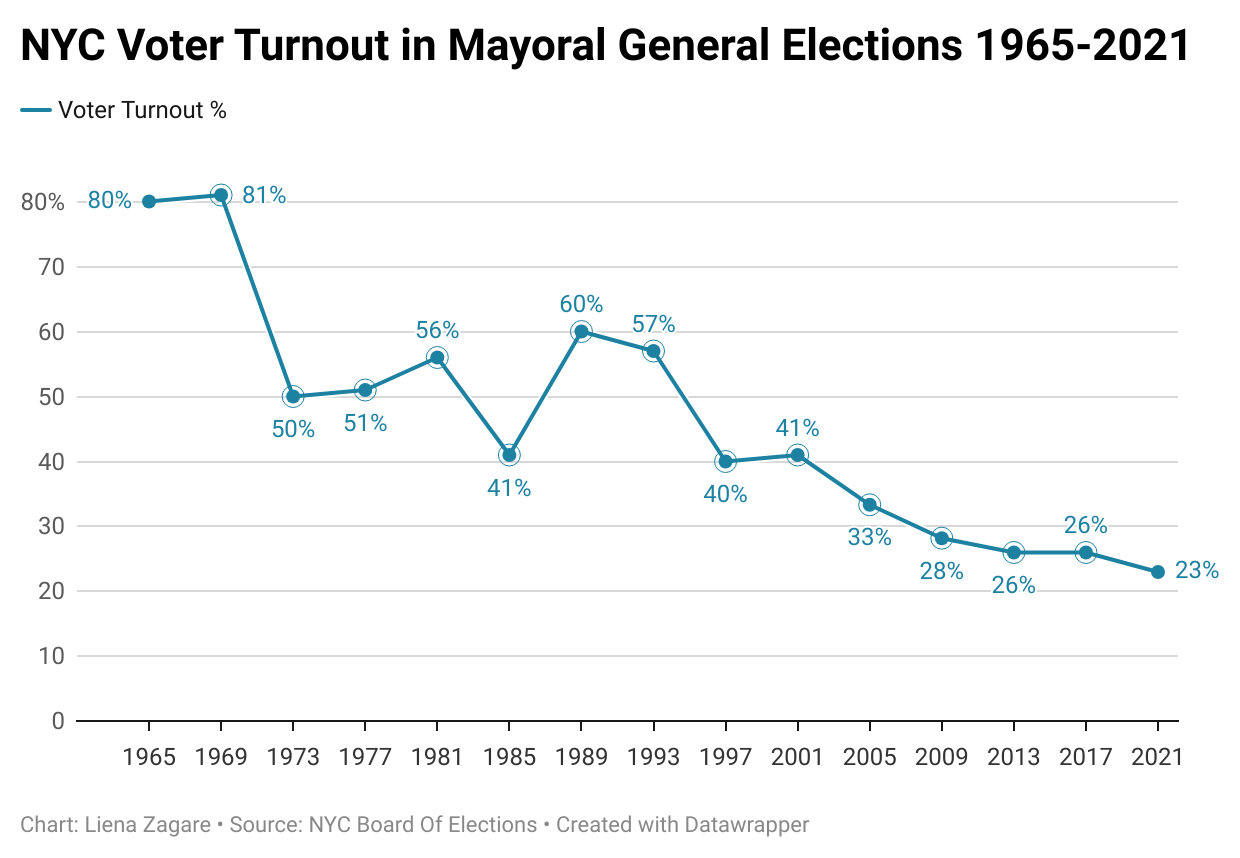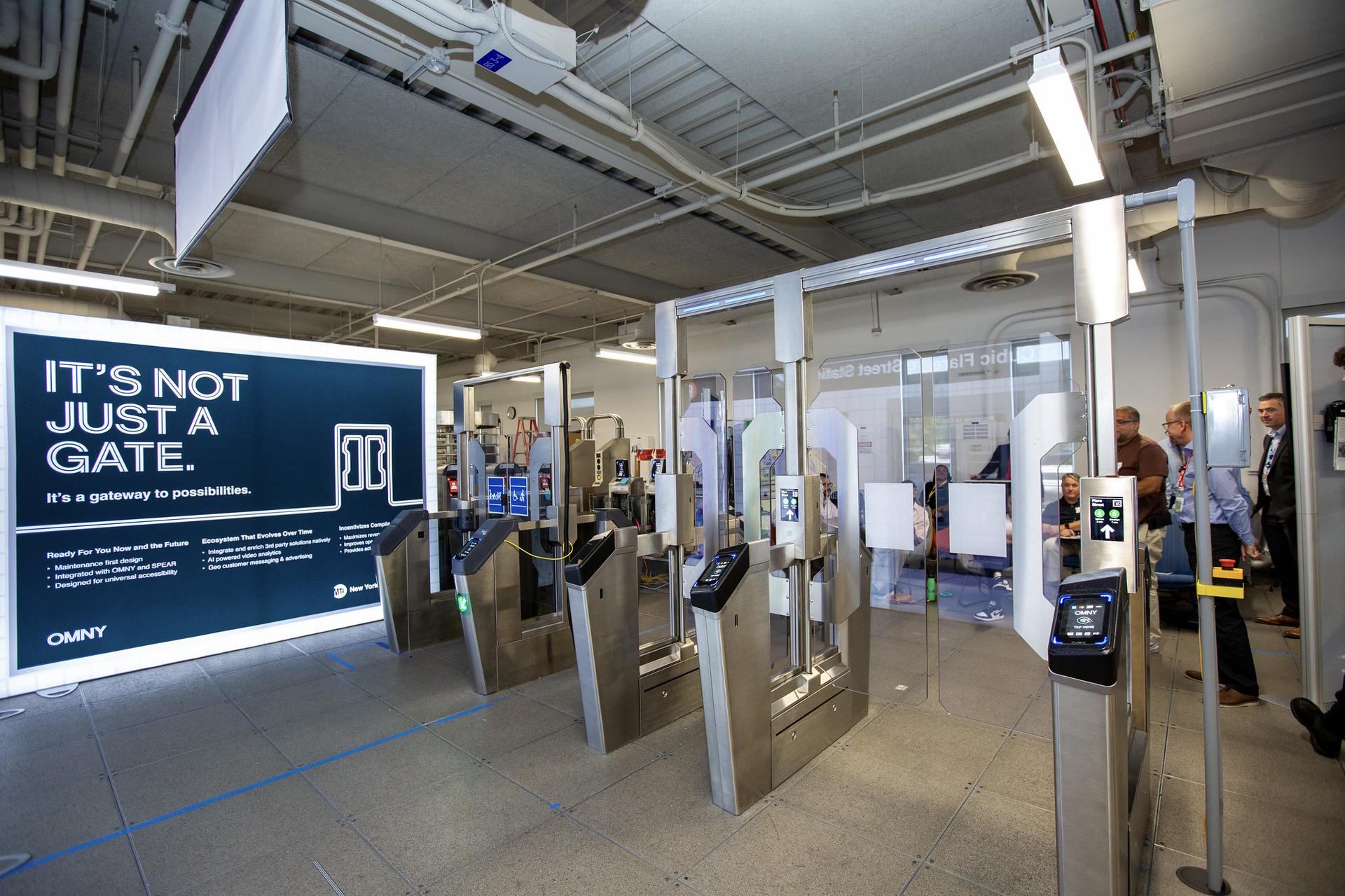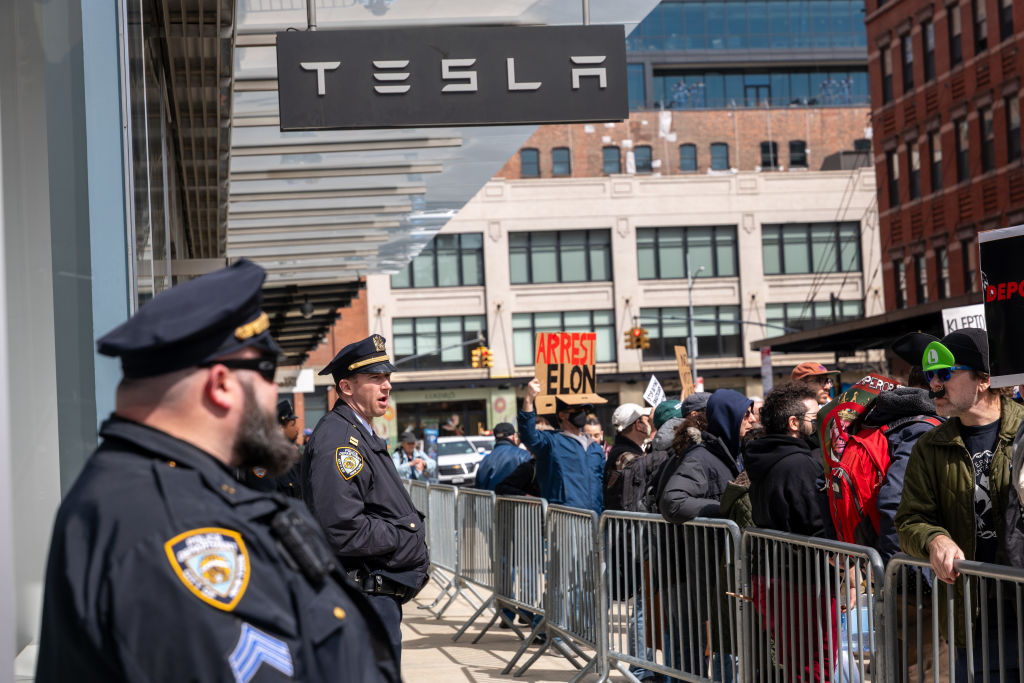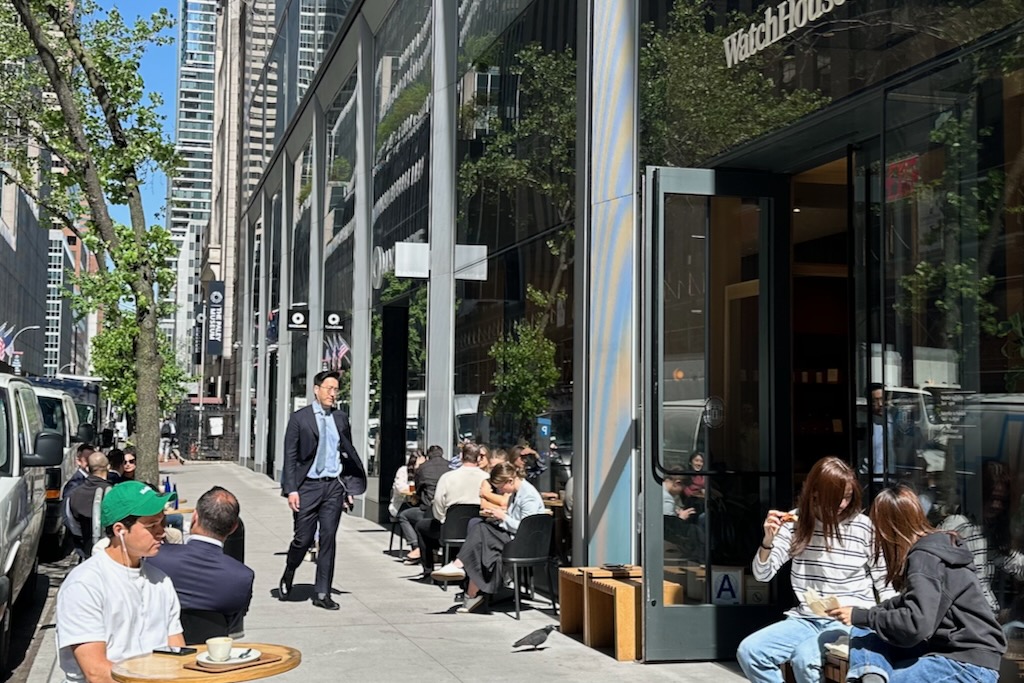|
Forwarded this email? Sign up for free to have it sent directly to your inbox.
|
|
|
Eric Adams on the campaign trail. (Photo by Michael M. Santiago/Getty Images) |
We’re just under eight weeks out from the Democratic primaries, and this week we’re looking at Mayor Adams' media strategy, how to improve elections in NYC, scanners, gates, and more. Adams' "Best Budget Ever" was released yesterday, so more on that next time.
As always, let me know what you think. Just hit reply. Did someone forward this to you? Sign up for free to get it in your inbox every Friday. Thanks for reading!
— Liena Zagare |
Mayor Eric Adams doesn’t much like talking to the media, and he seems to think he can seek reelection without facing tough questions even in America’s media capital— thanks in part to his own, taxpayer-funded media machine.
Adams' 2021 campaign relied on mainstream debates, editorial board meetings, and frequent interviews. But since taking office, he has appeared only once on WNYC’s Brian Lehrer Show and has granted limited sit-downs with NY1’s Errol Louis or CBS2’s Marcia Kramer. Instead, he emphasizes friendly channels: hosting a monthly Hear from Eric call-in show on WBLS 107.5 FM (“This election season, we'll be moving into an extended schedule with our mayor”), publishing op-eds in outlets like amNY, later promoted on his social channels, and going direct through email, social media, and messaging apps.
“Hear from Eric,” a multi-channel platform launched in 2023, is the biggest political communications machine in town —from Instagram (~1M followers), Facebook (375K), YouTube (35K), and X (1.5M followers) to untold numbers of recipients of his weekly email newsletters, and texts. That’s in addition to the Mayor’s Office reach across the platforms (~1M followers on X about half a million on Facebook just on the main account, departments each have their own). In the absence of publicly available data on the latter, it seems reasonable to estimate the mayor is able to directly reach about 3 million New Yorkers, likely more.
He also leverages appearances in friendly ethnic media outlets to reinforce messages in trusted, demographically targeted formats. But not without controversy: Greenpointers publisher wrote that she “received subtle pressure to publish weekly op-eds” from the administration, which she rejected because she didn’t want to be a “propaganda mouthpiece,” possibly reflected in the advertising dollars her outlet received from the city, despite the publication’s reach.
The tone of communications has shifted notably over time. Early messaging in 2022 was administrative and neutral, but by 2024 it adopted clear campaign-style language: “Promises made, promises kept,” for instance.
In all of this, Adams is part of a broader trend in political media: building insulated ecosystems that bypass institutional scrutiny. The local strategy has familiar national echoes: frame the press as adversarial, build alternative distribution, and make connection—not confrontation—the central currency of political communication.
“I told the team we have to write our own narrative, because if we don’t show the success and we don’t have a person [here] who has benefited from what we’re doing, it just doesn’t seem to get covered,” Adams told reporters at a press conference last September, as the scandals in his administration piled up. “We want to have folks pay attention of how successful this administration has been.”
|
|
|
From Left: Andrew Cuomo, Adrienne Adams, Brad Lander, Scott Stringer, Zellnor Myrie, Jessica Ramos, Zohran Mamdani, Michael Blake, Whitey Tilson. Photos via Getty Images. |
The biggest campaign development this week: Andrew Cuomo secured the endorsement of 1199SEIU, the city’s largest private-sector union, representing about 200,000 healthcare workers. Combined with 32BJ SEIU and the Hotel Trades Council, Cuomo now has the most unified and powerful labor operation in the race.
The United Federation of Teachers, representing nearly 200,000 members, has not yet endorsed a 2025 mayoral candidate due to internal leadership turmoil and a new requirement that candidates teach for a day in a public school—factors that have delayed the union’s typically deliberative endorsement process.
Andrew Cuomo is using “redboxing” —a legal but controversial tactic—to signal super PACs while avoiding formal coordination, Politico reports. Running a tightly controlled “bunker campaign,” he’s limiting public and press access as he attempts a comeback, Ross Barkan writes in Crain’s. Meanwhile Cuomo denies seeking alliances and dismisses cross-endorsements as “backroom deals.”
The New York Times profiled Brad Lander, who is framing himself as the ethical alternative: “I am a decent person. Let’s just start there.” |
|
|
New York City voters are asked to cast ballots at least twice most years, and yet its closed primary system bars more than one million independents — about 21% of the electorate — from participating in primaries that effectively decide city leadership. With about 70% of the voters registered as Democrats, voting in the general election can feel like a waste of time.
MI's John Ketcham has long called for reforms aimed at creating a government that truly reflects the will of all residents, in the place of a structure that favors party insiders and depresses turnout. Some of those reforms, including allowing independents to vote in party primaries and moving city elections to even-numbered years, are now being considered by the Charter Revision Commission.
As Harry Siegel wrote in the Daily News, open primaries would fix "New York's deeply flawed democracy that too many voters are checked out of and effectively disenfranchised from."
"Even in a good year, a few hundred thousand people choose the mayor for our city of 8.5 million, giving outsized influence to public-sector unions, interest groups and others who control large voting blocs and further dispiriting the broader electorate," Josh Greenman writes in Vital City.
That concern is amplified this year: with Mayor Eric Adams skipping the Democratic primary to run as an independent and Andrew Cuomo and Zohran Mamdani leading a divided Democratic field, a narrow slice of voters could again determine the city's next mayor. The November general election may actually feature a more competitive four- or five-way race — something the city has not seen in a good while.
New York's off-cycle elections, originally designed to preserve local control, now depress turnout and empower political machines. Reformers argue that open primaries and even-year voting would finally expand participation. The 2025 Charter Revision process offers the best chance in decades to change that. |
MTA Turnstiles, DOE Scanners, Rent Guidelines |
MTA will start testing new gates from four vendors. Photo: Cubic, Via MTA |
The MTA is ramping up its fight against fare evasion with two key measures: delayed emergency exit doors and modern fare gates. Over 150 subway stations will be retrofitted with emergency doors that open only after a 15-second delay, discouraging fare-skippers waiting to slip in. Meanwhile, the MTA will test replacing traditional turnstiles with more secure, tech-equipped gates at 20 stations this year, part of a broader $1.5 billion modernization effort to reduce fare-skipping. (amNY)
A 15-year-old was stabbed near August Martin High School in Queens on Wednesday—just as the NYPD halted all unannounced weapons screenings in city schools due to a complete breakdown of its mobile metal detectors (Chalkbeat). With new scanners still pending, the pause leaves hundreds of campuses more at risk. Only 79 of NYC’s 1,400 school buildings have permanent scanners; the rest rely on mobile units for spot checks. Their failure removes a key deterrent as school-adjacent violence rises. (NY Post, Daily News)
The Rent Guidelines Board (RGB) has proposed rent increases for New York City's nearly one million rent-stabilized apartments, with one-year leases potentially rising by 1.75% to 4.75% and two-year leases by 4.75% to 7.75%. These rates, if approved at the final June vote, would mark the fifth consecutive annual increase. Mayor Eric Adams called the vote a "challenging decision," noting that the top-end hike could place an "unreasonable burden" on tenants amid persistent affordability challenges. Landlord groups, meanwhile, argue the hikes are too modest to cover growing operating costs like property taxes and repairs. (NY Post)
A new brief from the Community Service Society (CSS) estimates that a rent freeze could save those same tenants up to $6.84 billion over four years—money that could instead support food, childcare, and other essentials. The idea has gained support from mayoral candidates Brad Lander, Adrienne Adams, and Scott Stringer, all of whom back a 2025 freeze but haven't committed to extending it. Frontrunner Andrew Cuomo has criticized the proposal as politically motivated and ineffective at tackling structural housing issues.
|
Protesters outside TESLA dealership in NYC (Photo by Spencer Platt/Getty Images) |
|
|
New York lawmakers are moving to revoke Tesla’s right to sell cars directly to consumers in the state, targeting a 2014 exemption that allowed the company to bypass restrictive franchise dealership rules. The push is part of a broader political backlash against Elon Musk, whose alignment with Donald Trump has alienated Democratic legislators. In addition to revoking Tesla’s sales waiver, lawmakers are proposing an audit of the nearly $1 billion in subsidies granted to the company for its Buffalo factory, and calling for public pension funds to divest from Tesla entirely.
Back in 2014, that carveout arguably made sense. Tesla was a first mover in the electric vehicle market, and the waiver allowed New York to support EV access without dismantling the dealership system overnight. This new effort is pure political payback. If the goal is to modernize New York’s outdated car sales laws, that’s worth doing—but it should be done transparently, equitably, and with more than one target in mind. |
Bryant Park. Photo by Liena Zagare |
WatchHouse, the stylish London-based specialty coffee chain, opened its first international location in Midtown Manhattan last spring at 660 Fifth Avenue. The coffee, pastries, and setting are all excellent. There are about 20 seats inside, and roughly the same number outside on West 52nd Street, where the entrance is located. Open from 7 a.m. to 6 p.m. on weekdays and 9 a.m. to 6:30 p.m. on weekends, it's a great breakfast stop—before it fills up with tourists and shoppers later in the day.
|
| |
|
John Tierney joins Brian Anderson to discuss why composting and recycling persist despite the lack of evidence for their efficacy.
|
|
|
A weekly newsletter about NYC politics and policy, published by the Manhattan Institute, edited by Liena Zagare. |
|
|
Copyright © 2025 Manhattan Institute, all rights reserved.
|
|
|
|

